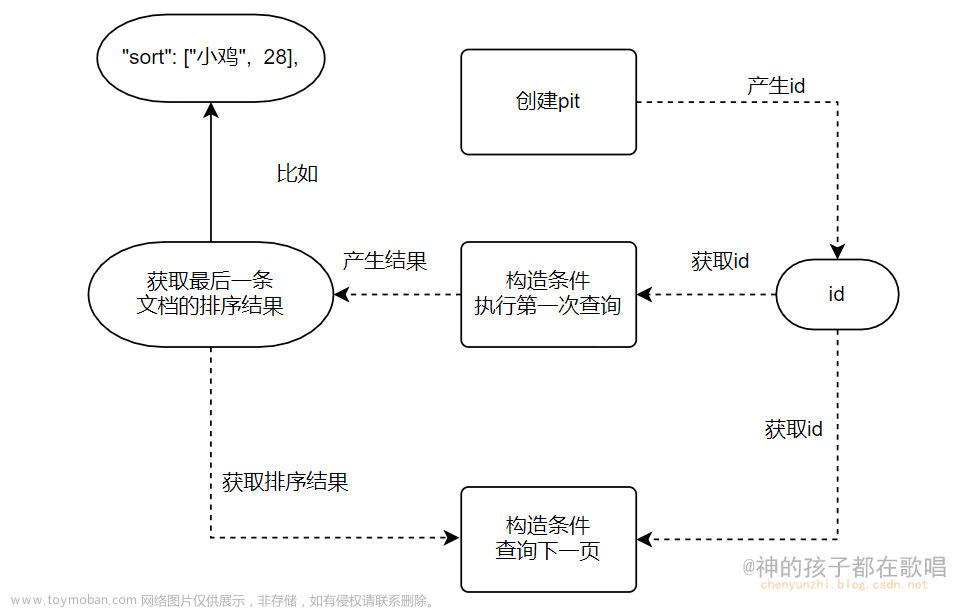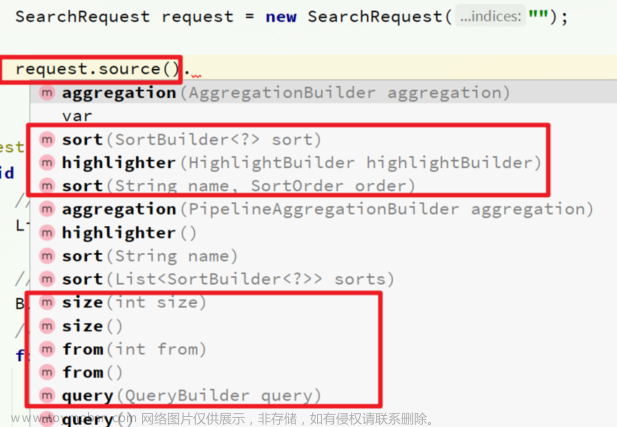管理索引是客户端应用常用的一些动作,比如我们创建,删除,打开 及关闭索引等操作。在今天的文章中,我将描述如何在 Java 客户端应用中对索引进行管理。
前提条件
我们需要阅读之前的文章 “Elasticsearch:在 Java 客户端中使用 truststore 来创建 HTTPS 连接”。在那篇文章中,我们详述了如何在 Java 客户端应用中和 Elasticsearch 建立连接。在这里就不再累述了。
为了方便大家的阅读,我创建了如下的一个 github 仓库:GitHub - liu-xiao-guo/elasticsearchjava-manage-index
代码
在代码中我创建了如下的一个 class:
IndexOperations.java
import co.elastic.clients.elasticsearch.ElasticsearchClient;
import co.elastic.clients.elasticsearch._types.mapping.TypeMapping;
import co.elastic.clients.elasticsearch.indices.CreateIndexRequest;
import co.elastic.clients.elasticsearch.indices.CreateIndexResponse;
import co.elastic.clients.json.JsonpMapper;
import jakarta.json.Json;
import jakarta.json.stream.JsonParser;
import java.io.IOException;
import java.io.StringReader;
public class IndexOperations {
private final ElasticsearchClient client;
public IndexOperations(ElasticsearchClient client)
{ this.client = client; }
// Check whether an index exists or not
public boolean checkIndexExists(String name) throws IOException {
return client.indices().exists(c -> c.index(name)).value();
}
// Create an index if it does not exist
public void createIndex(String name) throws IOException {
client.indices().create(c -> c.index(name));
}
// Delete an index if it exists
public void deleteIndex(String name) throws IOException {
client.indices().delete(c -> c.index(name));
}
// Close an index
public void closeIndex(String name) throws IOException {
client.indices().close(c -> c.index(name));
}
// Open an index
public void openIndex(String name) throws IOException {
client.indices().open(c -> c.index(name));
}
// Create an index with mappings defined
public void putMapping(String index, String mappings) throws IOException {
JsonpMapper mapper = client._transport().jsonpMapper();
JsonParser parser = Json.createParser(new StringReader(mappings));
CreateIndexRequest request_create = new CreateIndexRequest.Builder()
.index(index)
.mappings(TypeMapping._DESERIALIZER.deserialize(parser, mapper))
.build();
CreateIndexResponse response_create = client.indices().create(request_create);
}
}通过这个 class 的使用,我们可以对一个索引进行 create,delete,open,close 及检查是否存在。关于使用 mapping 来创建索引,更多的信息可以参考文章 “Elasticsearch:在 Java 应用中创建 mappings,批量写入及更新 - Java client 8.x”。
在代码中,我们需要修改相应的部分创建 ElasticsearchClient 实例。我们使用如下的代码来示例化 IndexOperations:
ElasticsearchJava.java
try {
makeConnection_truststore();
} catch (CertificateException e) {
e.printStackTrace();
} catch (NoSuchAlgorithmException e) {
e.printStackTrace();
} catch (KeyStoreException e) {
e.printStackTrace();
} catch (KeyManagementException e) {
e.printStackTrace();
}
IndexOperations io = new IndexOperations(client);我们可以使用如下的代码来对索引的操作进行测试:
io.createIndex(INDEX_NAME);
Thread.sleep(1000);
io.closeIndex(INDEX_NAME);
io.openIndex(INDEX_NAME);
io.deleteIndex(INDEX_NAME);
String mappings = "{\n" +
" \"properties\" : {\n" +
" \"id\" : {\n" +
" \"type\" : \"keyword\" \n" +
" },\n"+
" \"name\" : {\n" +
" \"type\" : \"text\",\n" +
" \"fields\" : {\n" +
" \"keyword\" : {\n" +
" \"type\" : \"keyword\",\n" +
" \"ignore_above\" : 256 \n" +
" }\n" +
" } \n" +
" }, \n" +
" \"price\" : { \n" +
" \"type\" : \"long\" \n" +
" } \n" +
" }\n" +
"}\n";
io.putMapping("test1", mappings);我们在代码中放置了 1 秒的延迟(Thread.wait(1000)) 以防止对索引的快速操作,因为它们的分片分配是异步的,并且它们需要几毫秒才能准备好。 最佳实践是不使用类似的 hack,而是在执行进一步操作之前轮询索引的状态,并且仅在它变为绿色时执行这些操作。
在上面的代码的最后部分,我们使用 io 来创建一个具有 mappings 的索引。执行完后,我们可以使用如下的命令来查看:文章来源:https://www.toymoban.com/news/detail-407189.html
GET test1/_mapping上面的命令显示:文章来源地址https://www.toymoban.com/news/detail-407189.html
{
"test1": {
"mappings": {
"properties": {
"id": {
"type": "keyword"
},
"name": {
"type": "text",
"fields": {
"keyword": {
"type": "keyword",
"ignore_above": 256
}
}
},
"price": {
"type": "long"
}
}
}
}
}到了这里,关于Elasticsearch:在 Java 客户端应用中管理索引 - Elastic Stack 8.x的文章就介绍完了。如果您还想了解更多内容,请在右上角搜索TOY模板网以前的文章或继续浏览下面的相关文章,希望大家以后多多支持TOY模板网!











